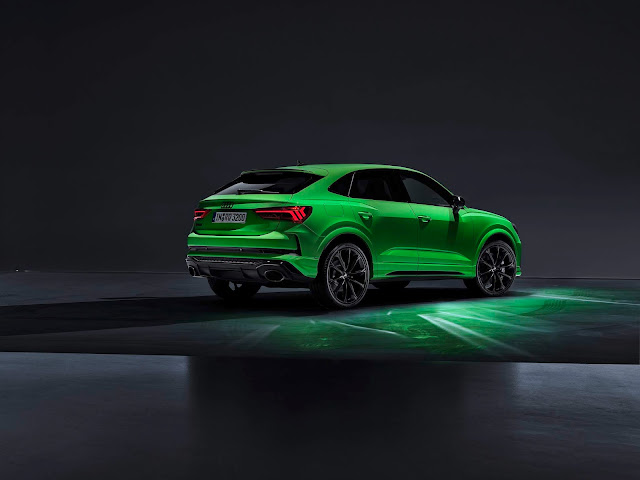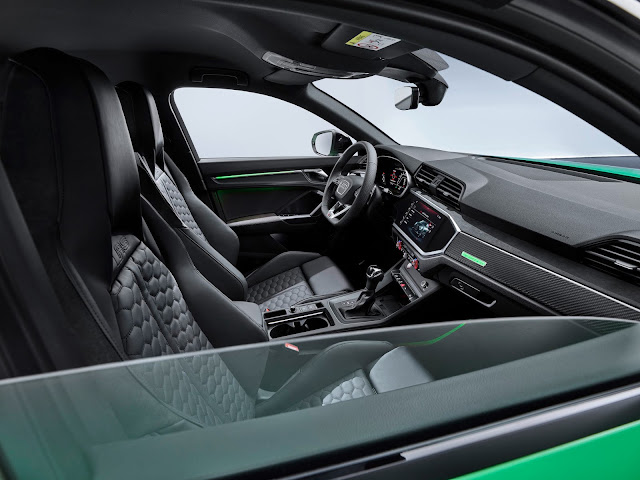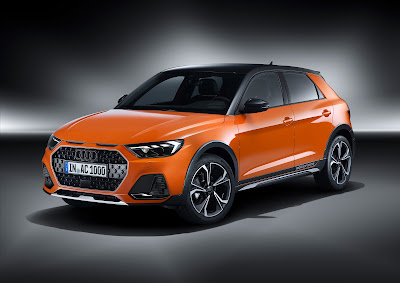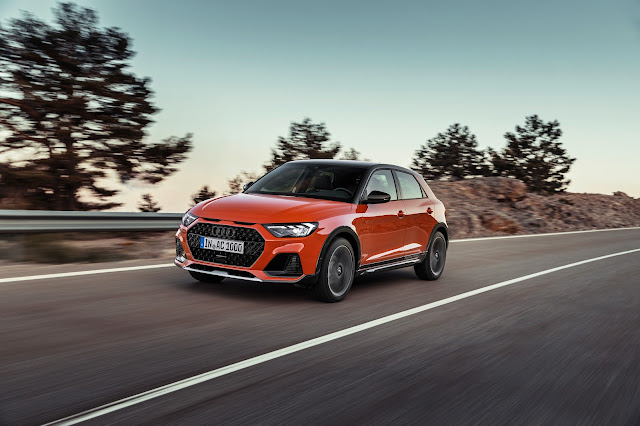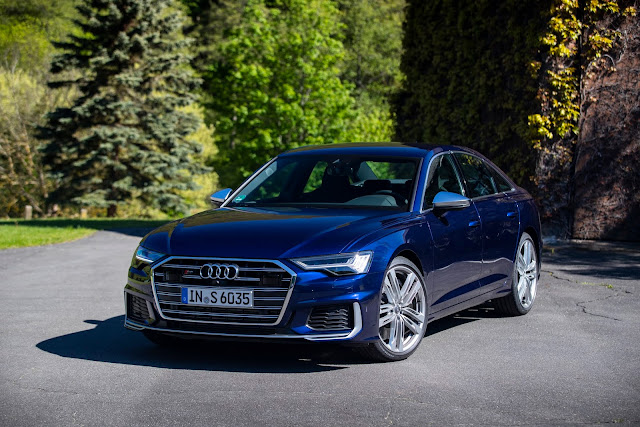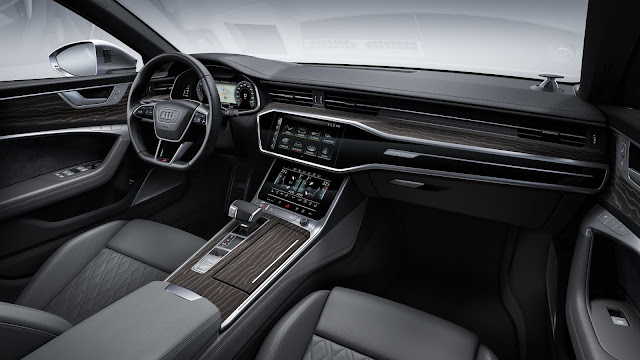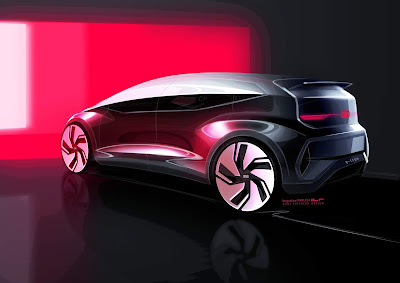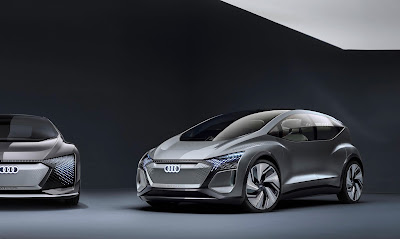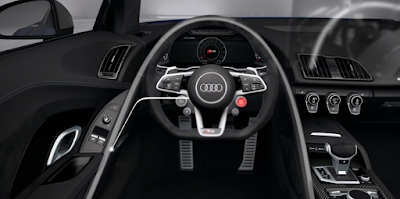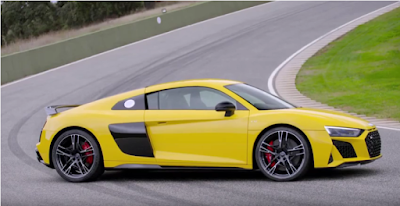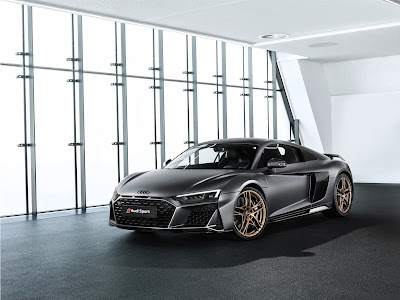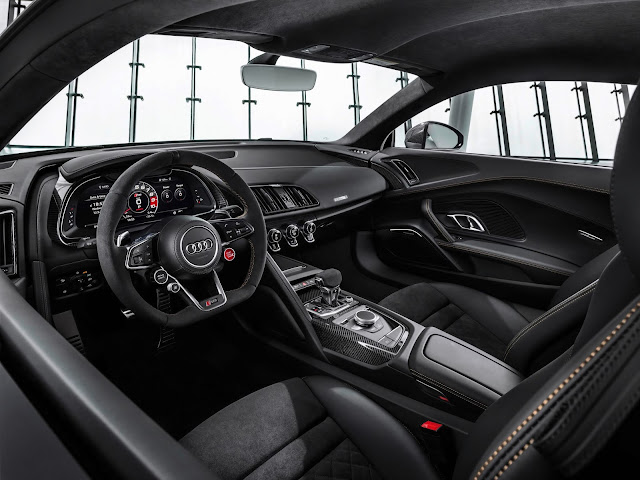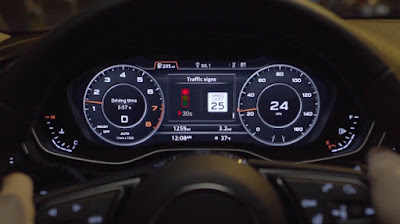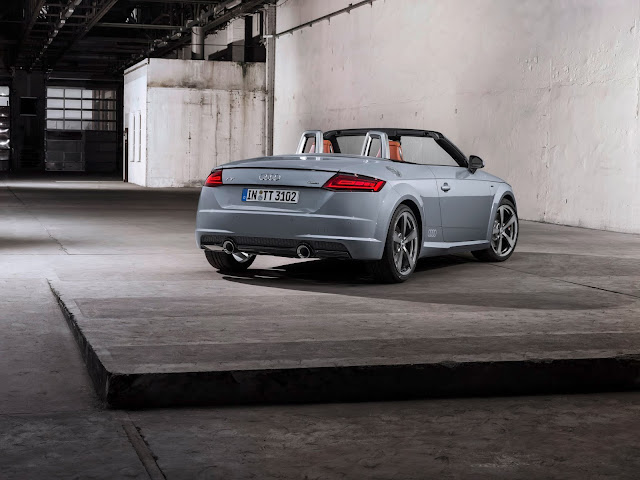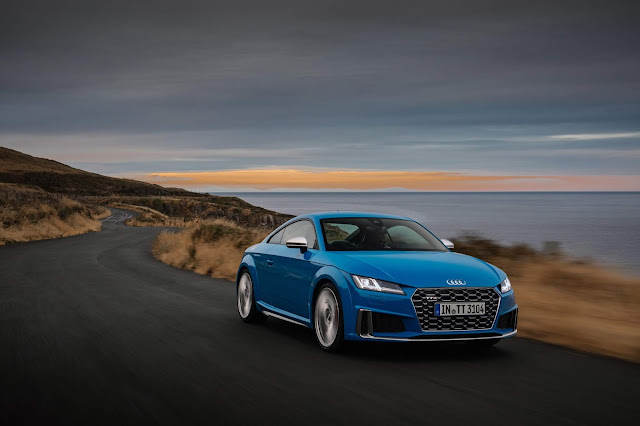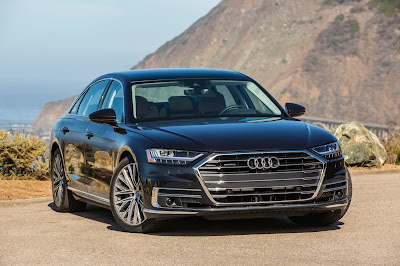
Minimal power packs: Audi RS Q3 and Audi RS Q3 Sportback
"The first Audi RS Q3** built up its very own section. We plan to proceed with this example of overcoming adversity with the new age of the minimized elite SUV," says Oliver Hoffmann, Managing Director of Audi Sport GmbH. "With the offering of the all-new Audi RS Q3 Sportback**, a dynamic SUV car hybrid, we are the innovator and are utilizing to the full the sensational development potential for Audi Sport."
The Audi RS Q3** and the Audi RS Q3 Sportback** are synonymous with quality and remarkable execution. Excellencies that are additionally reflected in the plan.
The Singleframe with no shading differentiating encompass in the reduced SUV makes a much more keen impression. The gleam dark flame broil with three-dimensional honeycomb structure is inset further and straightforwardly into the RS guard with its enormous side air bays.
The striking boomerang-molded edges in the guard are structured only for the RS Q3**. The RS qualities are likewise evident in the level cuts over the Singleframe radiator grille.
With its descending slanting car like rooftop line, the RS Q3 Sportback** is with a tallness of 1,557 millimeters (5.1 ft) 45 millimeters (1.8 in) lower than the RS Q3**. The rising shoulder line on the Sportback is put more remote down than on the sister model, bringing down the body's optical focal point of gravity.
Accordingly, the body shows up considerably progressively solid and the wheels bigger. Both Audi Sport superior games vehicles underscore their exhibition goal with articulated muscles over the wheel curves, which have been flared by 10 millimeters (0.4 in).
The back structure additionally shows up exceptionally incredible. With the low back window and the rooftop edge spoiler with RS-explicit spoiler lip in shine dark, the RS Q3 Sportback** shows up even more extensive than its sister model.
The low-threw rooftop line comes full circle in solid, level slanting D-columns. The RS-explicit long rooftop edge spoiler in the RS Q3** underscores the articulated forward push of the elite SUV and guarantees improved downforce. The new age of the RS Q3** seeks the first run through with a double branch RS exhaust framework with huge oval tailpipes on the two sides and chrome-hued trims. This fumes framework sits in a RS-explicit guard with back diffuser and level sharp edges in sparkle dark. The cutting edges are accessible in matt aluminum as a choice.
The superior SUVs come standard with LED headlights. Network LED headlights with dynamic markers and RS-explicit obscured trims are accessible as a choice. The back lights additionally highlight LED innovation.
Remarkable: the drive
Inside the Audi Q3 family, the RS Q3 (joined fuel utilization in l/100 km*: 8.9 - 8.8 (26.4 - 26.7 US mpg); consolidated CO2 outflows in g/km*: 203 - 202 (326.7 - 325.1 g/mi) and RS Q3 Sportback (consolidated fuel utilization in l/100 km*: 8.9 - 8.8 (26.4 - 26.7 US mpg); consolidated CO2 emanations in g/km*: 204 - 202 (328.3 - 325.1 g/mi)) are the energetic leaders. The exhibition figures for the reduced motors are convincing: five-chamber, 294 kW (400 hp) control yield, 480 Nm (354.0 lb-ft) of torque, quattro all-wheel drive. The five-chamber motor is a cutting edge great. A year ago, Audi Sport got the looked for after "Global Engine of the Year Award" for the 2.5 TFSI motor for the ninth continuous time.
The multi-grant winning five-chamber motor increases a decent 17 percent expansion in power at an unaltered dislodging of 2,480 cc. The motor's greatest torque is accessible over the extremely expansive rev extend somewhere in the range of 1,950 and 5,850 rpm. The RS Q3** and RS Q3 Sportback** dash from zero to 100 km/h (62.1 mph) in simply 4.5 seconds. The top speed is directed at 250 km/h (155.3 mph) or a discretionary 280 km/h (174.0 mph).
At under 50 centimeters (19.7 in) long, the 2.5 TFSI motor is very minimized and is 26 kg (57.3 lb) lighter than the past model. Its crankcase is made of aluminum, which alone spares 18 kg (39.7 lb). Expound measures lessen interior rubbing while simultaneously expanding force yield.
The chamber liners are plasma-covered; the crankshaft principle orientation are six millimeters (0.2 in) littler in breadth. The crankshaft is empty exhausted and is along these lines 1 kg (2.2 lb) lighter, while the aluminum cylinders have coordinated channels for oil cooling.
In the short warm-up stage after a virus start, the switchable water siphon doesn't circle the coolant in the chamber head – the 2.5 TFSI motor in this way arrives at its working temperature all the more rapidly. This brings down the coefficient of grinding and lessens fuel utilization.
1-2-4-5-3 – terminating switches back and forth between contiguous chambers and those far separated from each other. The specific terminating arrangement and the odd number of chambers make for an exceptionally uncommon beat and one of a kind motor sound.
The double branch RS exhaust framework underscores the trademark sound of the five-chamber terminating grouping.
The alternatively accessible RS game fumes framework with dark tailpipe trims complements the obvious sound much more.
The power from the five-chamber motor streams by means of a seven-speed S tronic to the quattro perpetual all-wheel drive that disperses the power as required between the axles by means of a multi-plate grip.
The wheel‑selective torque control idealizes the protected and coordinated taking care of.
The Audi drive select unique taking care of framework impacts the quattro drive and different parts, for example, controlling, suspension, S tronic, motor trademark and sound. Contingent upon the chose hardware variation, there is a decision of five or six modes: comfort, auto, dynamic, productivity and individual or, as an option in contrast to the individual mode, the two new RS modes RS1 and RS2. By means of the MMI the driver can modify and spare the two RS modes separately. Just squeezing the new "RS MODE" directing wheel catch gives quick access to the two new modes and enables the driver to switch between modes.
Reliably lively: the suspension
The standard RS sport suspension brings down the body by 10 millimeters (0.4 in) contrasted and the Audi Q3 and Q3 Sportback. Its reliably lively tuning fulfills the essential prerequisites for the extraordinary treatment of the two game compacts.
The RS-tuned dynamic directing likewise passes on shut down contact with the street even on quick twists.
At the front hub with its MacPherson configuration highlighting lower wishbones, the track width is 1,590 millimeters (5.22 ft). In the back, the four-interface configuration gives a track width of 1,583 millimeters (5.19 ft). Just because on a smaller elite SUV, Audi Sport offers 21-inch wheels in different edge plans. Behind the standard 20-inch or discretionary 21-inch wheels, the all-new six-cylinder RS steel stopping mechanism works with ventilated and punctured plates estimating 375 millimeters (14.8 in) (front) and 310 millimeters (12.2 in) (back, not punctured). Their brake calipers are painted dark as standard and are accessible in red as an alternative. The brake calipers of the discretionary, all-new RS artistic brakes are accessible alternatively in dark, red or blue. In front, the braking force is created by recently created monoblock aluminum calipers and artistic brake circles that are 380 millimeters (15.0 in) in distance across. At the back, gliding calipers and steel circles estimating 310 mm (12.2 in) in width guarantee the important deceleration.
As a choice the new RS Q3** and RS Q3 Sportback** are accessible with the RS sport suspension in addition to with Dynamic Chassis Control (DCC). Here an electrically incited relative valve directs the progression of oil into the damper cylinders.
The Audi drive select powerful taking care of framework additionally impacts the discretionary RS sport suspension in addition to with damper control, in which sensors measure developments of the vehicle body. The RS-tuned dampers are then balanced appropriately to the street surface conditions and driving circumstance.
The suspension gives the ideal damping power to every damper inside milliseconds – low for hard knocks; high to prop the body during quick cornering or while braking. The aftereffect is upgraded driving elements, exact security and spry taking care of combined with much more prominent solace.
Driver-arranged: the inside
The athletic plan of the outside is reverberated in the vehicle's inside. The accentuation on the flat lines passes on a liberal feeling of room. The cooling control unit, the middle reassure and the MMI contact show are tilted toward the driver by ten degrees – the whole cockpit is especially planned in light of the driver. The motor can be begun utilizing the discretionary beginning stop catch with its red ring.
The engineering of the instrument board with the Audi virtual cockpit in the RS configuration fits consummately with the working idea.
The MMI contact show with its serious shine dark glass-look encompass openings in flawlessly as another focal component. As an alternative, the driver can pick the bigger Audi virtual cockpit in addition to with move light show that prompts the driver to upshift when the most extreme motor speed is come to.
Unique RS shows in the Audi virtual cockpit in addition to likewise give data on tire weight, torque, control yield, lap times, g-powers and increasing speed estimations.
Game seats in dark cowhide/Alcantara with RS emblazoning express the athletic character of the RS Q3** and RS Q3 Sportback**. The RS game seats in fine Nappa calfskin with RS-explicit honeycomb example and coordinated head limitations are accessible without precedent for the Q3 family. Their differentiating sewing comes standard in gleam dark, and alternatively in red or blue. When choosing one of the two RS configuration bundles in red or blue, features on the directing wheel edge, belt lashes, floor tangles and apparatus switch are hued while the controlling haggle switch come in Alcantara. With the all-encompassing RS configuration bundles, the boards and entryway armrests are cut in red or blue Alcantara. Trims in Aluminum Race, anthracite, alternatively in piano finish, dark
Audi RS Q3
Combined fuel consumption in l/100 km: 8.9 - 8.8 (26.4 - 26.7 US mpg); combined CO2 emissions in g/km: 203 - 202 (326.7 - 325.1 g/mi)
Audi RS Q3 Sportback
Combined fuel consumption in l/100 km: 8.9 - 8.8 (26.4 - 26.7 US mpg); combined CO2 emissions in g/km: 204 - 202 (328.3 - 325.1 g/mi)
